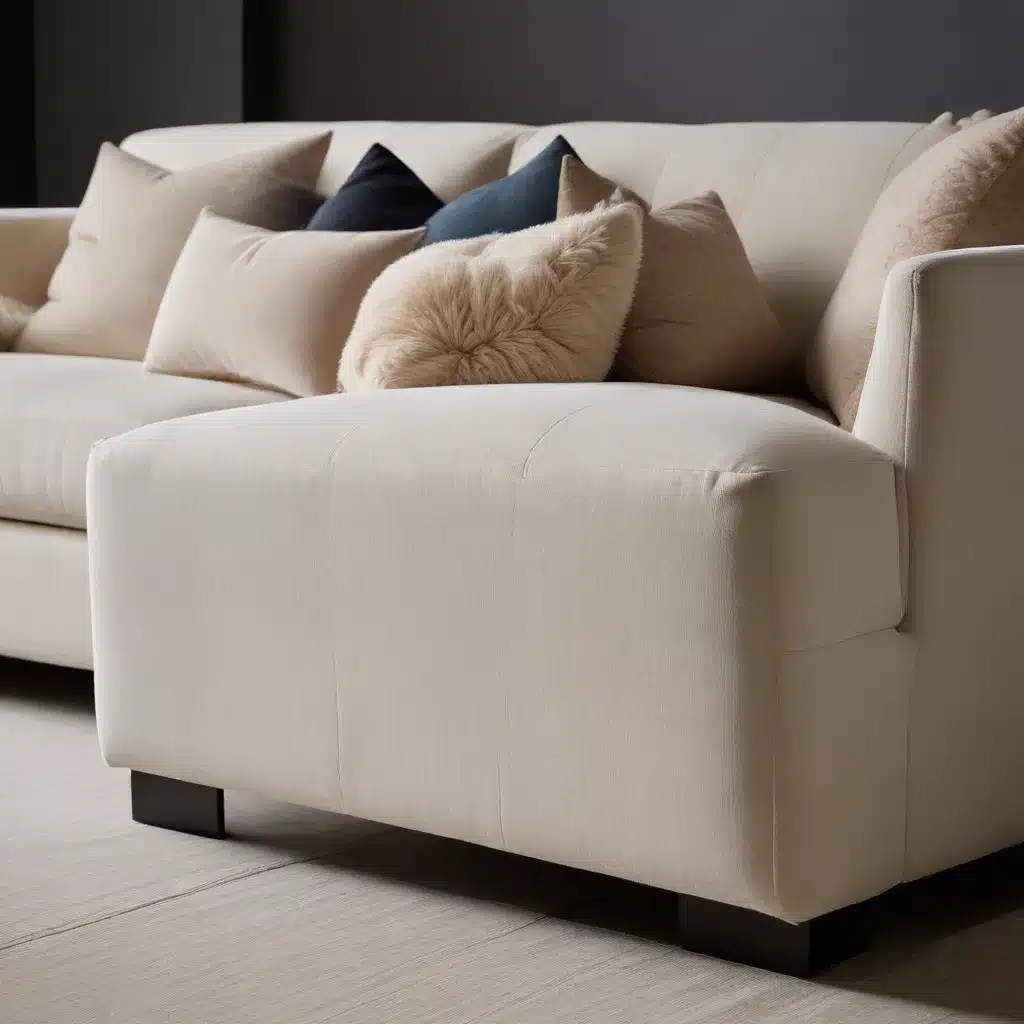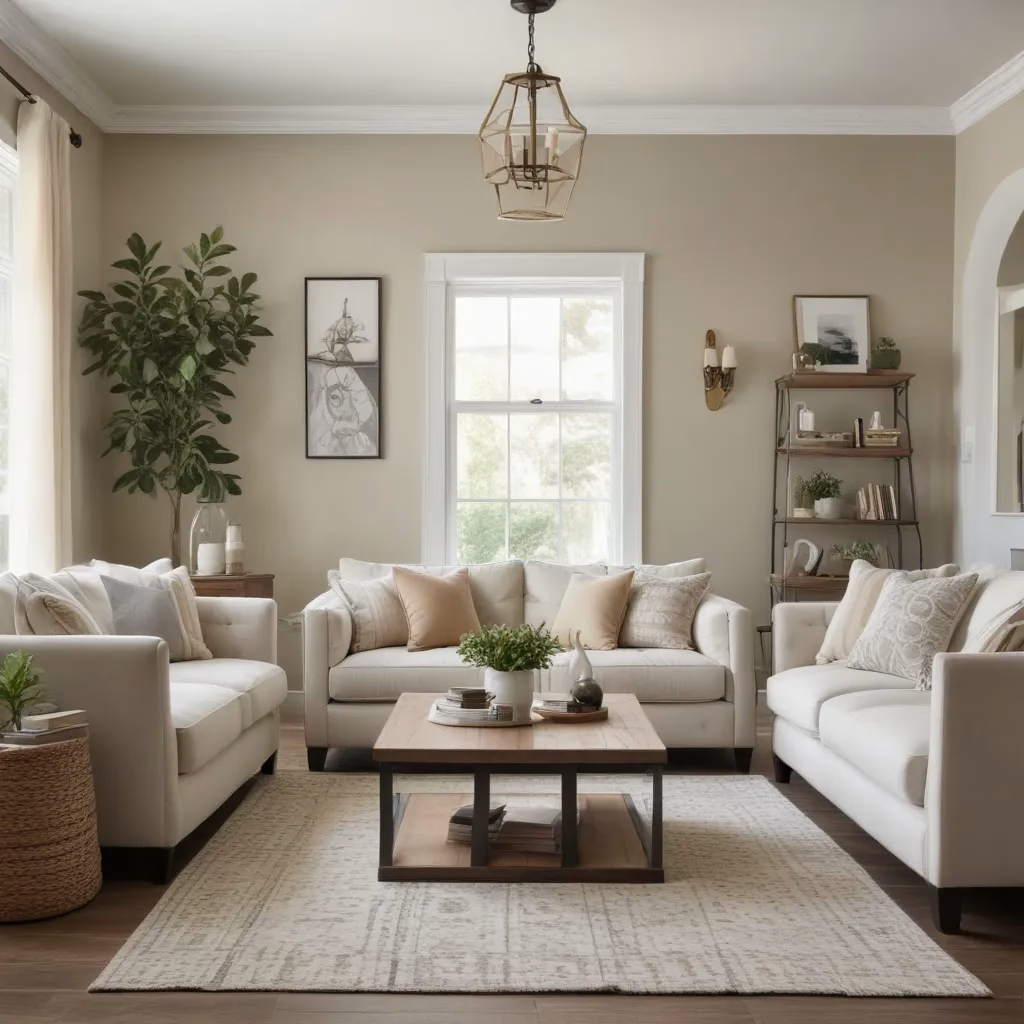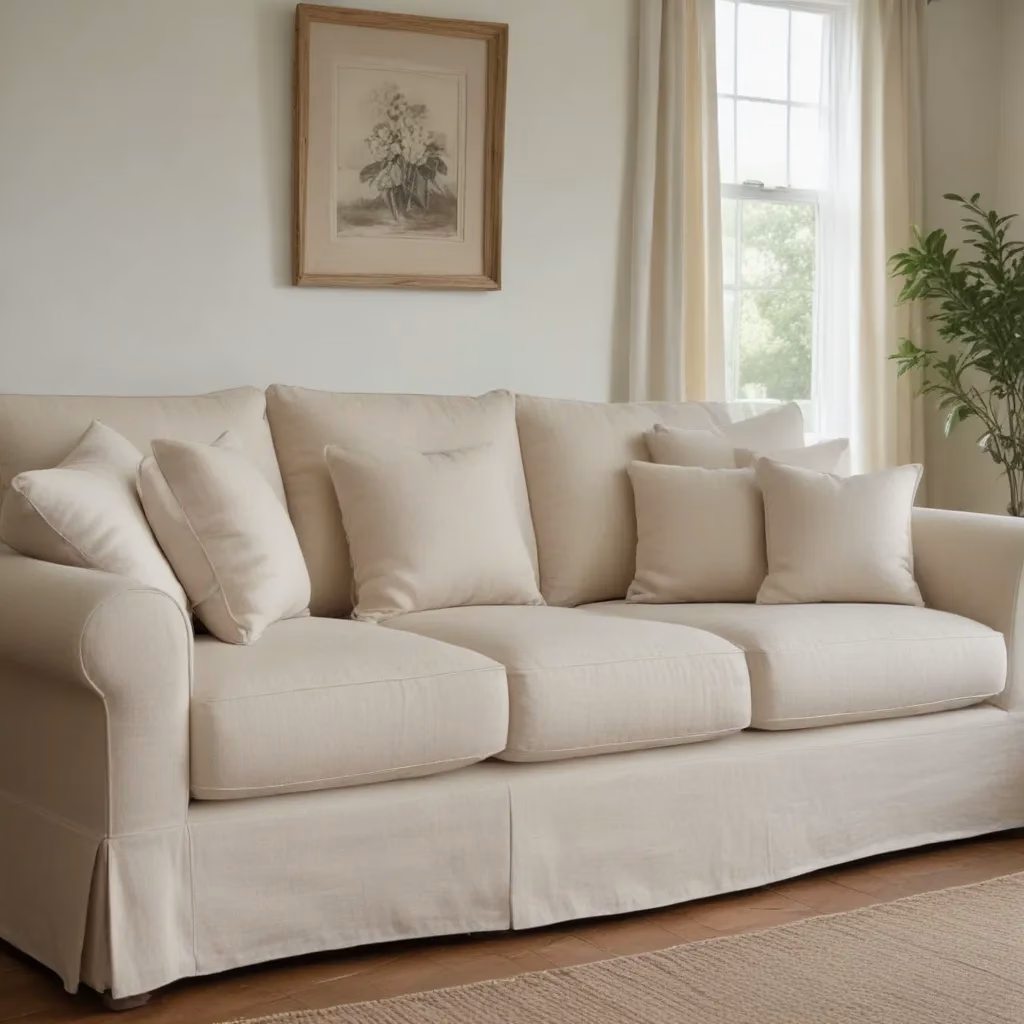
The Rise of Chenille in Contemporary Sofa Design
As a furniture specialist with years of experience in the industry, I’ve witnessed numerous trends come and go. However, the recent surge in popularity of chenille fabrics on modern sofas is a trend that’s caught my attention for its staying power and versatility.
Chenille, with its soft, plush texture, has become a favorite among homeowners and designers alike. Its ability to add warmth and comfort to the often stark lines of contemporary sofa designs has made it a go-to choice for those looking to balance style with coziness.
What I find particularly interesting about this trend is how it’s reshaping our perception of modern furniture. Traditionally, modern sofas were associated with sleek leather upholstery or tightly woven fabrics that prioritized form over comfort. But chenille is changing that narrative. It’s bringing a tactile element to modern design that was often missing, without compromising the clean lines and structured silhouettes that define contemporary aesthetics.
Balancing Comfort and Style in Modern Living Spaces
In my consultations with clients, I’ve noticed a growing desire for living spaces that feel both sophisticated and inviting. This is where chenille-upholstered modern sofas really shine. They offer the best of both worlds – the streamlined look of contemporary design with the plush comfort typically associated with more traditional furniture styles.
One of the challenges in creating a modern living space is avoiding a cold or sterile atmosphere. Chenille fabrics address this issue beautifully. Their soft, fuzzy texture adds visual warmth to a room, making it feel more welcoming. I often recommend chenille sofas to clients who want to maintain a modern aesthetic in their home but are concerned about the space feeling too austere.
Another advantage of chenille in modern sofa design is its ability to play with light. The fabric’s pile creates subtle shadows and highlights, adding depth and interest to solid-colored upholstery. This effect can bring life to minimalist spaces where furniture plays a key role in the overall design scheme.
Durability Meets Luxury: The Practical Benefits of Chenille
While aesthetics are certainly important, as a furniture specialist, I always emphasize the practical aspects of fabric choice to my clients. Chenille is not just about looks – it offers several functional benefits that make it an excellent choice for modern sofas.
Firstly, chenille is known for its durability. When properly cared for, a chenille-upholstered sofa can maintain its appearance and comfort for many years. This longevity is particularly important for modern sofas, which are often investment pieces in a home’s decor.
Secondly, chenille is relatively easy to clean and maintain. Most spills can be dealt with using water and mild soap, making it a practical choice for homes with children or pets. However, I always advise clients to check the specific care instructions for their chenille sofa, as treatments can vary depending on the blend of fibers used.
Lastly, chenille fabrics often have a higher resistance to pilling compared to some other upholstery materials. This means that your modern sofa is likely to keep its sleek, clean look for longer, even with regular use.
Color Trends in Chenille Upholstery
One of the most exciting aspects of the chenille trend in modern sofa design is the range of colors available. While neutral tones like gray, beige, and cream remain popular for their versatility, I’ve been seeing more bold color choices in recent years.
Deep jewel tones like sapphire blue, emerald green, and ruby red are making a statement in chenille upholstery. These rich colors add depth and sophistication to modern living spaces, creating focal points that draw the eye and anchor the room’s design.
For those who prefer a more subdued palette, pastel chenille fabrics offer a soft, calming effect that works well in contemporary settings. Pale pink, mint green, and lavender chenille sofas can add a touch of whimsy to an otherwise serious modern interior.
It’s worth noting that the color of chenille fabric can appear slightly different depending on the direction of the pile. This subtle variation adds an interesting visual element to modern sofas, creating a dynamic surface that changes with the light and viewing angle.
Mixing Textures: Chenille and Other Materials
One of the most effective ways to create visual interest in a modern interior is by mixing textures. Chenille sofas provide an excellent opportunity to play with textural contrasts in your living space.
I often recommend pairing a chenille sofa with sleek, hard surfaces like glass or metal coffee tables. The juxtaposition of the soft, plush fabric against these smooth, reflective surfaces creates a balanced and visually appealing composition.
Leather accents also work well with chenille. Consider adding leather throw pillows to a chenille sofa, or placing a leather armchair nearby. The contrast between the two textures adds depth to the room’s design while maintaining a cohesive modern aesthetic.
For a more eclectic look, you might combine a chenille sofa with natural textures like jute rugs or woven baskets. This combination of textures adds warmth and character to a modern space, preventing it from feeling too sterile or impersonal.
Caring for Your Chenille Sofa
As with any investment piece, proper care is crucial to maintaining the beauty and longevity of a chenille sofa. Here are some tips I always share with my clients:
-
Regular vacuuming: Use a soft brush attachment to gently vacuum your chenille sofa weekly. This removes dust and prevents dirt from settling into the fabric’s pile.
-
Immediate stain treatment: Address spills as soon as they happen. Blot (don’t rub) the area with a clean, white cloth to absorb as much liquid as possible.
-
Professional cleaning: Have your chenille sofa professionally cleaned every 12-18 months, or more frequently in high-traffic homes.
-
Avoid direct sunlight: Prolonged exposure to sunlight can fade chenille fabric. Consider using window treatments to protect your sofa if it’s placed near sunny windows.
-
Rotate cushions: Regularly rotating and flipping cushions (if possible) helps maintain even wear and prolongs the life of your sofa.
By following these care instructions, you can ensure that your modern chenille sofa remains a beautiful and comfortable centerpiece in your living space for years to come.
The Future of Chenille in Modern Sofa Design
As we look to the future of furniture design, I believe chenille will continue to play a significant role in modern sofa aesthetics. Its unique combination of comfort, durability, and visual appeal makes it well-suited to evolving interior design trends.
We’re likely to see innovations in chenille production, including more sustainable manufacturing processes and the incorporation of recycled materials. This aligns with the growing demand for eco-friendly furniture options in the modern market.
Additionally, I anticipate seeing chenille used in increasingly creative ways. Designers might experiment with mixing chenille with other fabrics on the same piece, creating interesting textural patterns. We may also see chenille applied to more diverse furniture silhouettes, expanding beyond traditional sofa forms.
As homeowners continue to seek furniture that balances style with comfort, chenille-upholstered modern sofas are well-positioned to meet this need. They offer a perfect blend of contemporary design and cozy appeal, making them a versatile choice for a wide range of interior styles.
Choosing the Right Chenille Sofa for Your Space
When selecting a chenille sofa for a modern living space, there are several factors to consider:
-
Color: Consider your existing decor and the mood you want to create. A neutral chenille sofa can serve as a versatile base for changing accent colors, while a bold hue can make a statement.
-
Pile direction: Some chenille sofas have a distinctive pile direction that can affect the fabric’s appearance. Consider how this will look in your space and with your lighting.
-
Frame style: Look for a sofa with clean lines and a structured silhouette to maintain a modern aesthetic. Avoid overly ornate or traditional frames.
-
Size: Measure your space carefully and consider the scale of your other furniture. A modern chenille sofa should complement, not overpower, your room.
-
Cushion fill: The type of cushion fill can affect both comfort and maintenance. High-resilience foam cores wrapped in down or fiber tend to offer a good balance of support and softness.
Remember, a sofa is a long-term investment in your home’s comfort and style. Take your time in selecting the right piece, and don’t hesitate to consult with a furniture specialist for personalized advice.
For more expert guidance on selecting the perfect sofa for your home, visit Sofa Spectacular. Their team of specialists can help you navigate the wide world of modern sofa design and find the ideal chenille piece for your space.
Incorporating Your Chenille Sofa into a Modern Design Scheme
Once you’ve chosen your perfect chenille sofa, the next step is integrating it into your modern interior design. Here are some strategies I often recommend to my clients:
-
Create a focal point: Let your chenille sofa be the star of the show. In a minimalist modern space, a richly textured chenille sofa can serve as a captivating focal point.
-
Play with contrast: If your chenille sofa is in a neutral tone, add pops of color with art, throw pillows, or area rugs. Conversely, if you’ve chosen a bold-colored chenille sofa, keep the surrounding elements more subdued.
-
Embrace negative space: Modern design often emphasizes the importance of negative space. Don’t feel the need to crowd your chenille sofa with too many accent pieces. Sometimes, less is more.
-
Consider lighting: The soft texture of chenille can create interesting shadows and highlights. Experiment with different lighting options to enhance this effect and create ambiance in your space.
-
Add complementary textures: While your chenille sofa provides a soft, plush texture, incorporate other textures to create a rich, layered look. Consider glass, metal, wood, or leather accents.
Remember, the key to successful modern design is balance. Your chenille sofa should feel like an integral part of the space, not an afterthought or a standalone piece.
The Impact of Chenille on Sofa Comfort and Functionality
Beyond its aesthetic appeal, chenille has a significant impact on the comfort and functionality of modern sofas. As someone who has tested countless sofas over the years, I can attest to the unique sitting experience that chenille provides.
The soft, raised pile of chenille creates a warm and inviting surface that’s comfortable against the skin. This is particularly noticeable in modern sofa designs, which often feature exposed arms and backs where skin contact is more likely.
Chenille also has a natural ability to regulate temperature. It feels cool to the touch in warm weather, yet provides insulation in cooler conditions. This makes chenille-upholstered sofas comfortable year-round, a quality that’s particularly appreciated in modern open-plan living spaces.
From a functional perspective, the density of chenille fabric makes it resistant to crushing and matting. This means that your modern sofa is likely to maintain its shape and appearance even with regular use. The fabric’s resilience also contributes to its longevity, ensuring that your sofa remains a beautiful and comfortable part of your home for years to come.
Chenille and Acoustic Properties in Modern Interiors
An often overlooked benefit of chenille in modern sofa design is its acoustic properties. In contemporary homes with hard surfaces and open floor plans, managing sound can be a challenge. Chenille fabric, with its soft, pile surface, can help absorb sound and reduce echo in a room.
This acoustic benefit is particularly valuable in modern living spaces where the sofa may be part of a larger, multi-functional area. The sound-absorbing qualities of chenille can help create distinct zones within an open plan, enhancing the overall comfort and functionality of the space.
When combined with other soft furnishings like rugs and curtains, a chenille sofa can significantly improve the acoustic environment of a modern interior. This can make the space feel more intimate and comfortable, counterbalancing the sometimes stark or echoing nature of contemporary architectural designs.
Customization Options with Chenille Upholstery
One of the exciting aspects of choosing a chenille sofa for a modern space is the range of customization options available. Many furniture manufacturers offer chenille in a variety of colors, patterns, and pile heights, allowing you to create a truly unique piece that fits your specific design vision.
Some options to consider include:
-
Pile height: Chenille is available in different pile heights, from short and velvet-like to longer and more plush. The pile height can affect both the look and feel of your sofa.
-
Pattern: While solid colors are popular, chenille can also be woven into subtle patterns or textures. These can add visual interest without overwhelming your modern aesthetic.
-
Color combinations: Some chenille fabrics incorporate multiple colored yarns, creating a rich, multi-tonal effect that can add depth to your sofa’s appearance.
-
Durability options: For high-traffic homes, you might consider performance chenille fabrics that offer enhanced stain and wear resistance.
When exploring these options, it’s helpful to request fabric samples to see and feel how different chenille varieties will work in your space. This hands-on approach can make a significant difference in choosing a sofa that you’ll love for years to come.
The Environmental Aspect of Chenille in Modern Sofa Production
As sustainability becomes an increasingly important consideration in furniture design, it’s worth examining the environmental impact of chenille fabrics used in modern sofas.
Traditionally, chenille was made from cotton, but today it’s often produced using a blend of natural and synthetic fibers. This blend can offer improved durability and stain resistance, but it’s important to consider the environmental implications.
Some furniture manufacturers are now offering chenille options made from recycled materials or sustainable fibers like bamboo. These eco-friendly alternatives can provide the same luxurious feel and modern aesthetic while reducing environmental impact.
When choosing a chenille sofa, consider asking about the fabric’s composition and the manufacturer’s sustainability practices. Many modern consumers are prioritizing eco-friendly options, and the furniture industry is responding with more sustainable chenille alternatives.
It’s also worth noting that the durability of chenille can contribute to sustainability by reducing the need for frequent furniture replacement. A well-made chenille sofa can last for many years, minimizing waste and the demand for new production.
Conclusion: The Enduring Appeal of Chenille in Modern Sofa Design
As we’ve explored throughout this article, the use of chenille fabrics in modern sofa design represents a perfect marriage of comfort and style. It offers a way to soften the often stark lines of contemporary furniture without compromising on clean, structured aesthetics.
The versatility of chenille, from its wide range of colors to its various texture options, makes it an excellent choice for those looking to create a unique and personalized modern living space. Its practical benefits, including durability and ease of maintenance, ensure that a chenille sofa is not just a stylish choice, but a smart long-term investment in your home.
As trends in interior design continue to evolve, I believe we’ll see chenille maintaining its popularity in modern sofa design. Its ability to blend comfort with contemporary style positions it well to meet the changing needs and preferences of homeowners and designers alike.
Whether you’re furnishing a new home, updating your living room, or simply looking to add a touch of softness to your modern interior, a chenille sofa is certainly worth considering. It offers a timeless appeal that can adapt to changing design trends while providing lasting comfort and style.
Remember, choosing the right sofa is about more than just aesthetics – it’s about creating a space that feels like home. With its unique combination of visual appeal and tactile comfort, a chenille-upholstered modern sofa can play a key role in achieving that perfect balance in your living space.



